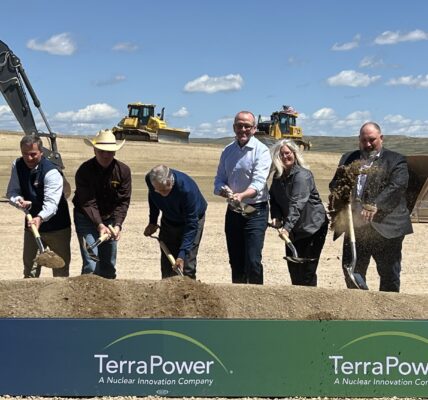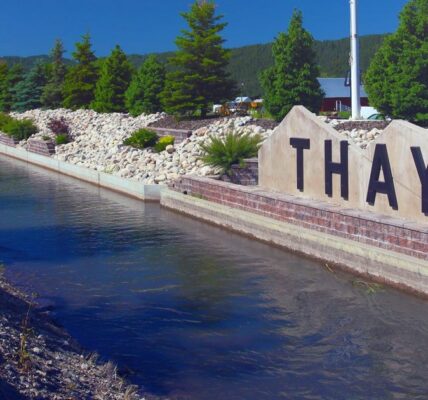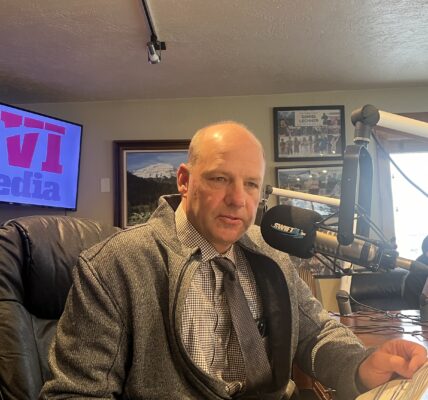
By Madelyn Beck, WyoFile.com
Money from lawsuit settlements with opioid manufacturers and distributors is starting to trickle into Wyoming, but state and local governments still don’t know how they’ll use the funds.
Wyoming is expected to get millions of dollars over the next few decades from organizations blamed with causing and exacerbating the opioid crisis. Many suits, like those against Johnson & Johnson, Walgreens and AmerisourceBergen, have already been settled. Others, like Walmart’s, are nearing completion.
The OneWyo Opioid Settlement Memorandum of Agreement outlines how the state’s settlement funds will be split: 65% will go to participating cities and counties and 35% will go to the state to be managed by the Wyoming Department of Health. All of that money will flow through the Wyoming Attorney General’s office.
A Feb. 4, 2021 press release on the state’s first opioid settlement included a statement from Attorney General Bridget Hill: “In a state of our size, we must work together at all levels of state and local government to maximize this and any future settlement funds to abate and alleviate the impacts of the opioid crisis.”
In the days following that announcement, Hill’s office was to “contact stakeholders and local leaders to discuss how to most effectively use Wyoming’s share of opioid settlement recoveries to address the opioid crisis statewide,” according to the release.
Nearly two years later, key stakeholders are still uncertain about how they’ll spend this money.
So far, WDH has received a little over $829,000 in settlement funds, and split it evenly between the Behavioral Health Division and Public Health Division, according to department spokesperson Kim Deti.
Beyond funding treatment and prevention, Deti said in an email, “there are no specific plans or more details at this point.”
There are more than 70 ways the state and its local governments can use the settlement funding, according to the MOA, most of which fall under opioid overdose prevention and substance use disorder treatment umbrellas.
Initiatives like expanding access to medication-assisted treatment and stigma reduction programs qualify, as does funding law enforcement efforts to combat the opioid crisis.
“Opioid Funds must be used in a present and forward-looking manner to actively abate and alleviate the impacts of the opioid crisis and co-occurring substance abuse in Wyoming,” the MOA states.
The City of Casper is expected to get more funding than any other Wyoming municipality, with 7.35% of the money apportioned to local governments.
City Manager Carter Napier and Deputy City Attorney Wallace Trembath have no knowledge of, or haven’t been privy to, any calls with the AG’s office to discuss opioid settlement funds, though previous staff may have, according to city employee Jolene Martinez.
“Nothing has come in yet” as far as settlement funding, but some of the money is expected to arrive by the end of 2022, Trembath said in a separate conversation.
He also said the city doesn’t have a spending plan yet. Working with Natrona County, which will get its own settlement funds, may be a feature of any future program, he said.
The city would likely welcome ideas other communities have already come up with to mitigate the effects of the opioid crisis with settlement funds, Trembath added.
State and local governments outside Wyoming have started announcing plans to put this money to work right away. In Rhode Island for example, the largest allocated chunk will go to school and community-based mental health programs, while Alabama plans to place opioid treatment programs in every county.
Alexis Vase Sessums, founder of the Wyoming Harm Reduction Collective, recommends focusing settlement resources on evidence-based prevention and treatment efforts, “like harm reduction, safe supplies, overdose reversal medications.”
Sessums said focusing on more mental health resources and preventative tools like naloxone or fentanyl test strips could significantly help the often-stigmatized group of people who have substance use disorders.
She was lucky to be outside Wyoming for the decades she was addicted to heroin, she said, because other states have more resources for those with substance use disorders.
“And because of that, I am alive,” she said. “I am disease free and was given the opportunity to have the kind of life that I have today. Dead people don’t recover.”
Wyomingites are dying from overdoses at increasing rates, often from the powerful synthetic opioid fentanyl made to look like other drugs.
Sessums plans to advocate for changes in the law this upcoming legislative session to allow for safe and free needle disposal and exchange pilot programs, she said.
Programs like that, including efforts to test and treat diseases like Hepatitis C and HIV from intravenous opioid use, are listed as possible uses for the settlement money.
Educating first responders on fentanyl treatment is another listed way to spend the money, which Sessums said would also be helpful given the false rumors that touching someone who has used fentanyl can cause an overdose.
Settlements already reached will bring money into Wyoming steadily for the next 18 years at least. More settlements may be on the horizon.
That’s according to attorney Jason Ochs, who represented Casper, Cheyenne, Rock Springs, Riverton and Carbon County in opioid settlement discussions.
The settlement with drug manufacturer Purdue Pharma, which many consider one of the largest contributors to the opioid epidemic, is expected to be significant, Ochs said, though details remain uncertain.
“When? I don’t know,” Ochs said, noting the ongoing and tangled bankruptcy litigation surrounding the organization. “That’s just a mess.”
Ochs said most of these opioid settlements will specifically go toward addressing the opioid crisis, while attorneys representing states and local governments will be compensated from another pool of money.
Law firms representing local governments, like Ochs’, are able to ask communities to pay more than is allotted in that special fund according to the state MOA, but Ochs said his office will not be seeking more.
“Every penny is going to go towards abatement,” he said.
This comes after what many see as the debacle of the U.S. tobacco settlements. The vast majority of that settlement money was spent in ways unconnected to addiction abatement and treatment, according to the Campaign for Tobacco-Free Kids. That settlement also left out many tribal interests.
These kinds of [addiction settlement] cases started with the tobacco litigation decades ago, and the tribes were not at the table,” said Kevin Washburn.
Washburn is a member of the Chickasaw Nation of Oklahoma and a law professor at the University of Iowa. He also worked with both the Obama and Biden administrations on aspects of federal relationships to tribes.
Currently, he’s a director and trustee of the tribal opioid settlement trust, which means he’ll help get settlement money to tribes, including the two federally recognized tribes in Wyoming — the Northern Arapaho and Eastern Shoshone.
The tribal opioid settlements are somewhat different from the state and local settlements. Tribes were part of the larger settlement process, but they have been given more flexibility for how to spend the $590 million from the first two settlements so far, which will be split between all participating federally recognized tribes.
The Cherokee Nation struck a separate deal for $75 million.
Tribes will be able to use more culturally specific practices to treat addiction or safeguard their communities from the opioid crisis. That includes things like the use of traditional healers, sweat lodges and activities such as canoe building.
“Opioid use and abuse comes from a place of pain, and tribes have different kinds of pain, additional kinds of pain,” Washburn said.
Native communities have faced disproportionate effects from the opioid crisis, according to the CDC, though the impacts vary widely from tribe to tribe.
Washburn expects the first round of settlement funding to go to tribes in 2023.
Currently, Washburn said, some tribes are in the process of appealing the amount of money their community will be apportioned.
Those involved in the tribal settlements are also working to make it easy for tribes to spend the money and report how they used it, according to Washburn, though they haven’t figured out exactly how they’ll do that yet.
All parties receiving this settlement money, whether members of tribal, local or state groups, will have to report how it’s being used.
For Wyoming and its participating local governments, the state is required to publish how that money is being used each year on Jan. 31.
If settlement funds are spent in ways that don’t qualify under the MOA, that document states the money must be paid back, withheld from future payments or potentially regained through the AG’s office filing suit.
“The Attorney General may recover from the Participating Local Government who failed to cure the unapproved use of any litigation fees, costs, and expenses incurred to recover such funds,” the document states.
Even the plans to spend the money might present a challenge. The MOA also states that participating counties will have to consult and get input from all their communities.
“Each Participating County shall make reasonable and good faith efforts to not only secure the collaboration of each of its constituent towns, but also to use the Opioid Funds in a manner that benefits the residents of each constituent city and town, regardless of population,” it states.





